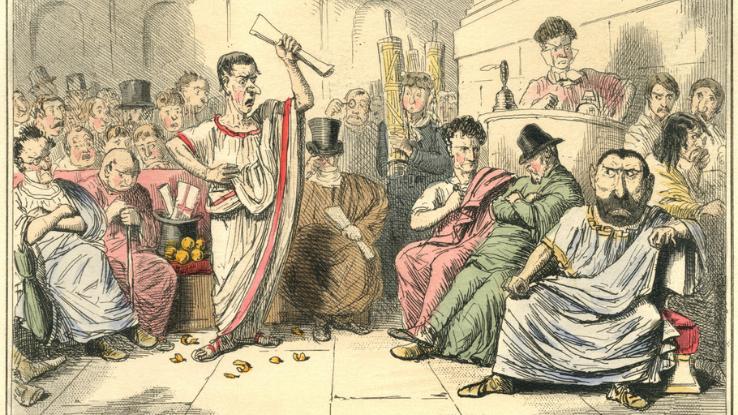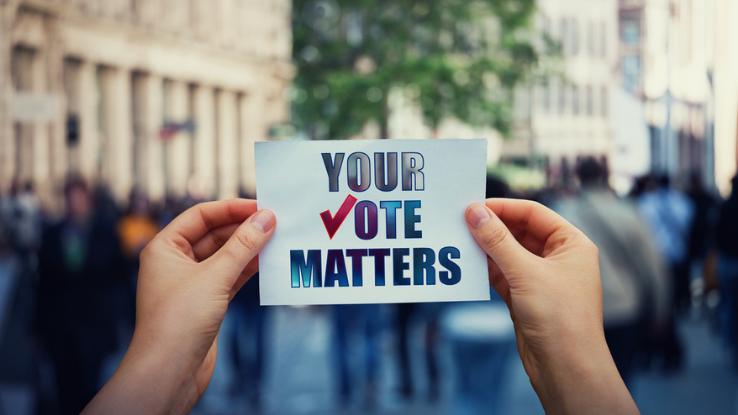What’s The Difference Between a Republic and a Democracy?

According to Oxford, a democracy is, “government by the people,” or a form of government in which the sovereign power resides in the people as a whole, and is exercised either directly by them or by officers elected by them.” On the other hand, a republic is “a state in which supreme power is held by the people and their elected representatives” and a republic also has “an elected or nominated president rather than a monarch.” Going off those definitions, the two words do seem interchangeable. However, there’s a little more to it.
“Democracy” is more of an umbrella term. The word describes a lot of different types of governments in which government officials are chosen by a group of voters. Neither “democracy” or “republic” has an affiliation with any political parties — they describe systems of government, for the most part. There are many different types of democracies. There are also different types of republics, which are typically more intricate.
A government that is a republic — or has elements of a democracy — is not inherently superior or inferior to other styles of government. It’s important to note the subtle differences in governments, and in a single government over time. We’ll walk you through why that’s so important, all while exploring different types of republics.
An Intro to the First Democracies

While there were earlier societies that had traits of a democracy, historians often point to Athens, Greece, as the first example of a democratic government. Only men could vote in ancient Athens, however. Women, people who were not citizens, enslaved people, newly freed people, and any man that did not complete military training could not vote. While this type of government would receive a lot of criticism today, almost 3,000 years ago it was deemed forward-thinking.
Ancient Rome, on the other hand, is known for creating the first republic. Their government was a bit more involved and intricate than what was going on in Greece. Rome’s republic formed in 509 BCE and lasted until 27 BCE. That government had several different legislative houses, including one that helped commoners pass legislation. The Roman territory was divided into different zones, much like our state lines or congressional districts today. Women and enslaved people still did not have a voice, but some progress was being made.
Fast forward to almost 1,000 years later when Iceland, home of the world’s oldest still-functioning democracy. In the year 930 CE, the people of Iceland formed a parliament of 63 representatives called “The Althing”, which would be elcted every four years. Still, only freed men were allowed to participate, but this model of government was an example for other governments, and founding documents like the Magna Carta and the U.S. Constitution, that came later. Iceland would not gain independence from Denmark until the 1800s, but the country still made great strides toward true democracy.
It wasn’t long after Iceland’s governmental development when, according to anthropologist Jack Weatherford, democracy made its way to the present-day United States. Weatherford believes that various Indigenous tribes practiced forms of democracy.
Different Types of Democracy You Still See Today

Direct Democracy: In a direct democracy, every eligible voter has a say in every matter. It’s very people-focused. The Athens of ancient Greece is the most notable example of this; so few people in Athens could vote, making direct democracy more doable.
Representative Democracy: Sometimes referred to as an indirect democracy, voters elect people to represent them in government. This form of government — a type of republic once used by ancient Rome — can be seen in action in the U.S. and France today.
Constitutional Monarchy: Also known as a parliamentary democracy, this is different from an absolute monarchy or a dictatorship; although a monarch runs things within set parameters as a figurehead, other democratic characteristics are still employed. Countries like Morocco, Monaco, Belgium, Jordan, Spain, Kuwait and the United Kingdom practice this style of government.
Other Democracies: Terms for describing different types of democracies can get very specific. For example, a “constitutional democracy” puts their nation’s constitution at the forefront. In an illiberal democracy, which can be found in Hungary or Russia, elected officials have unchecked power.
Why Do We Label Different Democracies?

Why does it matter what type of democracy a republic utilizes? Democracies don’t always last, and political scientists can trace these changes by understanding the particulars of a given government. Consider the case of Germany prior to World Wars I and II. Prior to, and during, World War I, Germany operated as a constitutional monarchy. As the nation struggled after the first World War, the country’s system of government grew into a dictatorship.
Democracies change all the time. That’s also what happened in Rome, the first republic. This matters because governments can affect millions of lives. And a shift in government can often affect neighboring nations too.
Organizing a democracy structurally is only one part of the equation. Is it really a democracy if certain groups of people don’t have a say? For example, the U.S.’s votership was once restricted to white men who were landowners. Fun fact: the first democracy to allow suffrage for all of its citizens (women and people of color included) was New Zealand in 1893. Since democracy is a newer concept in the larger scope of time, we have a lot to learn. And, in time, we will continue to observe what works.





